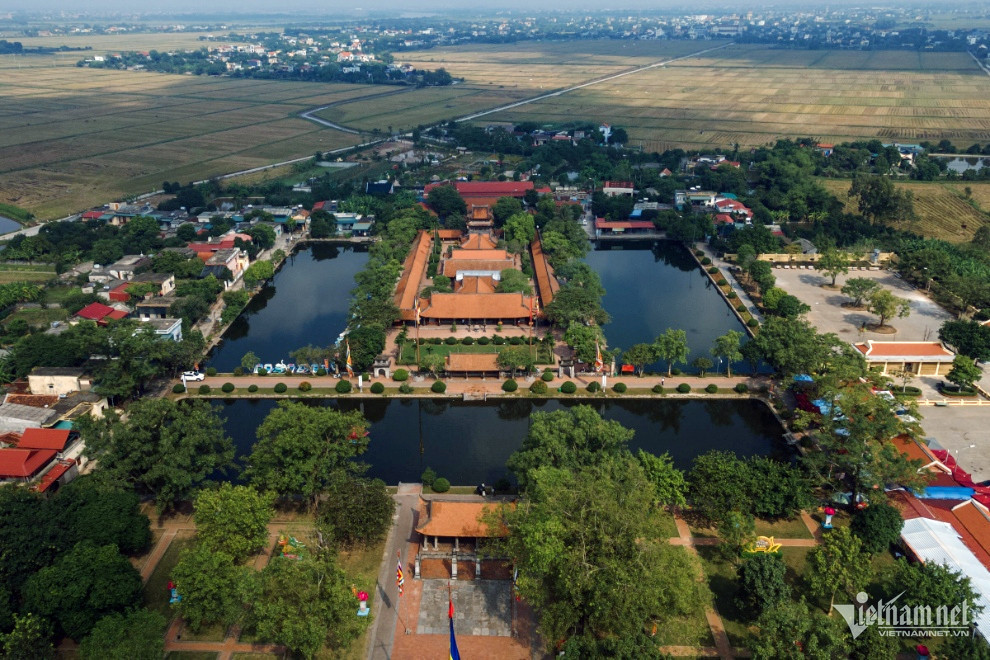Located in the heart of northern Vietnam’s Red River Delta, Hung Yen is known for having no forests, no mountains, and no coastline. Thai Binh, on the other hand, is bordered by rivers on three sides and by the sea on the fourth - yet it too has no mountains.
According to the proposed list of names and administrative centers for 34 newly merged provinces and cities, Hung Yen and Thai Binh will be combined into one province, retaining the name "Hung Yen," with the political and administrative center located in present-day Hung Yen.
One curious detail, noted by many observers, is that neither Hung Yen nor Thai Binh has any mountains.
Hung Yen lies entirely within the Red River Delta and features a flat terrain without forests, mountains, or access to the sea. Thai Binh is surrounded by rivers and borders the sea, but it too lacks any mountainous terrain.
As a result, even after their merger, the newly formed province will continue to be one of the few in Vietnam without any mountains. However, the new province is expected to gain stronger tourism appeal due to its rich array of cultural and historical landmarks as well as eco-tourism opportunities.
Visiting Keo Pagoda and chasing the “infinite sea”

Keo Pagoda still preserves nearly intact architecture from the Le Dynasty
Keo Pagoda, located in Duy Nhat commune of Vu Thu district in Thai Binh, is one of the most prominent spiritual tourism destinations in northern Vietnam. It attracts large numbers of pilgrims and tourists from across the country, especially after Lunar New Year.
Having stood for hundreds of years, Keo Pagoda has preserved the quintessential architectural style of the Le Dynasty, featuring gracefully curved rooftops, ironwood pillars, and intricately carved dragon-adorned wooden doors.
Today, the pagoda retains 17 structures with 128 compartments spread across approximately 41,000 square meters.
Visitors to Keo Pagoda can also explore other spiritual sites such as Am Vo Pagoda, Tran Temple, Tien La Temple, and Dong Bang Temple.
Quang Lang Beach, located in Thuy Hai commune of Thai Thuy district, Thai Binh, sits near the mouth of the Diem Ho River - a small offshoot of the Red River. It is about 140 kilometers from Hanoi and roughly 2 kilometers from Diem Dien town.

The “infinite beach” in Thai Binh glows with summer hues. Photo: Vu Thanh Thuy
Still largely untouched by tourism, this pristine stretch of coast has become a favorite among photographers in recent years thanks to its breathtaking sunrise views. It has even earned the nickname “infinite beach.”
Other coastal spots worth visiting include Con Vanh, Con Tien, and Con Den beaches.
Con Vanh is part of the Red River Delta biosphere reserve. It spans 1,696 hectares with a 6-kilometer-long sandy beach, 700 hectares of mangrove forest, and 56 hectares of casuarina forest lining the shore.
Thai Binh is also home to several traditional craft villages, including Dong Xam silver carving village, Hoi mat weaving village, and Nguyen village famous for its “banh cay” (rice candy), offering unique experiences for travelers.
Ancient villages and pagodas in Hung Yen
Pho Hien, once a bustling port city, was so prominent it inspired the saying: “First is the imperial capital, second is Pho Hien.”
Recognized as a special national relic site in 2014, the Pho Hien complex includes 16 notable landmarks, such as the Xich Dang Temple of Literature, Chuong Pagoda, Mau Temple, Tran Temple, and Hien communal house and pagoda.
Nom Village, located in Dai Dong commune, Van Lam district, was built more than 200 years ago. The village has retained its old-world charm, especially around the central complex featuring a communal house, ancient well, and giant banyan tree.
A visit here should include stops at Nom Pagoda and Nom Market. The pagoda houses over 100 ancient terracotta statues and numerous valuable artifacts such as Buddha statues, stone incense burners, stone stupas, bronze bells, and wooden altars.
Tat Vien Village in Thu Sy commune, Tien Lu district, is still home to many ancient houses showcasing the traditional beauty of northern Vietnamese villages. It’s also known for its over 200-year-old tradition of making fish traps.
Besides traditional traps for catching fish and shrimp, villagers in Thu Sy also produce bamboo and rattan tools such as “dom,” “lo,” and “dam.” Today, most of these products are used as decorations or film props.
Ban Village in My Hao township is famous far and wide for its “tuong Ban” (fermented soybean paste). Many households still practice this traditional craft. Villagers use longan leaves to ferment the mold and seal jars, and they draw water from the local well to make the paste.
Visitors can admire handmade ceramic jars dating back 50 to 70 years and hear locals recount the meticulous process of producing their signature soy paste.
Linh Trang